| Weight | 1 lbs |
|---|---|
| Dimensions | 9 × 5 × 2 in |
| host | mouse |
| isotype | IgM |
| clonality | monoclonal |
| concentration | 1 mg/mL |
| applications | ICC/IF, WB |
| reactivity | Clostridium botulinum Toxin A |
| available sizes | 500 µl |
mouse anti-Clostridium botulinum Toxin A monoclonal antibody (B364M) 1424
$620.00
Antibody summary
- Mouse monoclonal to Clostridium botulinum Toxin A
- Suitable for: ICC/IF,ELISA,RIA
- Isotype: IgM
- 500 µl
mouse anti-Clostridium botulinum Toxin A monoclonal antibody (B364M) 1424
| antibody |
|---|
| Tested applications ICC/IF,ELISA |
| Recommended dilutions ELISA, Immunocytochemistry, Immunofluorescence End users should determine optimal dilutions for their applications. |
| Immunogen Synthetic peptide corresponding to aa 1280-1292 (Cys-Ser-Trp-Glu-Phe-Ile-Pro-Val- Asp-Asp-Gly-Trp-Gly-COOH) at the C-terminus of Clostridium botulinum Toxin A. |
| Size and concentration 500µL and lot specific |
| Form liquid |
| Storage Instructions This antibody is stable for at least one (1) year at -20° to -70°C. Store product in appropriate aliquots to avoid multiple freeze-thaw cycles. |
| Storage buffer Hybridoma culture supernatant, cell free media. |
| Purity hybridoma culture |
| Clonality monoclonal |
| Isotype IgM |
| Compatible secondaries goat anti-mouse IgG, H&L chain specific, peroxidase conjugated polyclonal antibody 5486 goat anti-mouse IgG, H&L chain specific, biotin conjugated, Conjugate polyclonal antibody 2685 goat anti-mouse IgG, H&L chain specific, FITC conjugated polyclonal antibody 7854 goat anti-mouse IgG, H&L chain specific, peroxidase conjugated polyclonal antibody, crossabsorbed 1706 goat anti-mouse IgG, H&L chain specific, biotin conjugated polyclonal antibody, crossabsorbed 1716 goat anti-mouse IgG, H&L chain specific, FITC conjugated polyclonal antibody, crossabsorbed 1721 |
| Isotype control Mouse monocolonal IgM- Isotype Control |
| target relevance |
|---|
| Protein names Botulinum neurotoxin type A (BoNT/A) (Bontoxilysin-A) (BOTOX) [Cleaved into: Botulinum neurotoxin A light chain (LC) (EC 3.4.24.69); Botulinum neurotoxin A heavy chain (HC)] |
| Gene names botA,botA bna CBO0806 CLC_0862 |
| Protein family Peptidase M27 family |
| Mass 149426Da |
| Function FUNCTION: [Botulinum neurotoxin type A]: Botulinum toxin causes flaccid paralysis by inhibiting neurotransmitter (acetylcholine) release from the presynaptic membranes of nerve terminals of the eukaryotic host skeletal and autonomic nervous system, with frequent heart or respiratory failure (PubMed:8103915). Precursor of botulinum neurotoxin A which has 2 coreceptors; complex polysialylated gangliosides found on neural tissue and specific membrane-anchored proteins of synaptic vesicles (By similarity). Receptor proteins are exposed on host presynaptic cell membrane during neurotransmitter release, when the toxin heavy chain (HC) binds to them (PubMed:19476346). Upon synaptic vesicle recycling the toxin is taken up via the endocytic pathway (By similarity). When the pH of the toxin-containing endosome drops a structural rearrangement occurs so that the N-terminus of the HC forms pores that allows the light chain (LC) to translocate into the cytosol (By similarity). Once in the cytosol the disulfide bond linking the 2 subunits is reduced and LC cleaves its target protein on synaptic vesicles, preventing their fusion with the cytoplasmic membrane and thus neurotransmitter release (By similarity). {ECO:0000250|UniProtKB:P0DPI0, ECO:0000269|PubMed:19476346, ECO:0000269|PubMed:8103915}.; FUNCTION: [Botulinum neurotoxin A light chain]: Has proteolytic activity (PubMed:8103915, PubMed:8294407). In vitro the whole toxin is reduced to release LC (PubMed:8103915, PubMed:8294407). After translocation into the eukaryotic host cytosol, LC hydrolyzes the 197-Gln-|-Arg-198 bond in SNAP25, blocking neurotransmitter release (PubMed:8103915, PubMed:8294407). {ECO:0000269|PubMed:8103915, ECO:0000269|PubMed:8294407, ECO:0000305|PubMed:19476346}.; FUNCTION: [Botulinum neurotoxin A heavy chain]: Responsible for host epithelial cell transcytosis, host nerve cell targeting and translocation of light chain (LC) into host cytosol. Composed of 3 subdomains; the translocation domain (TD), and N-terminus and C-terminus of the receptor-binding domain (RBD) (PubMed:17173035, PubMed:9783750). The RBD is responsible for the adherence of the toxin to the cell surface. It simultaneously recognizes 2 coreceptors; polysialated gangliosides and synaptic vesicle glycoproteins SV2A, SV2B and SV2C in close proximity on host synaptic vesicles (By similarity). The RBD specifically recognizes the N-linked glycan on 'Asn-559' of SV2A, SV2B and SV2C (By similarity). Isolated HC binds to host synaptosomes, significantly decreases uptake and toxicity of whole BoNT/A (PubMed:19476346). Binds ganglioside GD1a in vitro (PubMed:21849494). The N-terminus of the TD wraps an extended belt around the perimeter of the LC, protecting Zn(2+) in the active site; it may also prevent premature LC dissociation from the translocation channel and to protect toxin prior to translocation (PubMed:9783750). The TD inserts into synaptic vesicle membrane to allow translocation into the host cytosol (By similarity). {ECO:0000250|UniProtKB:P0DPI0, ECO:0000269|PubMed:17173035, ECO:0000269|PubMed:19476346, ECO:0000269|PubMed:21849494, ECO:0000269|PubMed:9783750}. |
| Catalytic activity CATALYTIC ACTIVITY: Reaction=Limited hydrolysis of proteins of the neuroexocytosis apparatus, synaptobrevins, SNAP25 or syntaxin. No detected action on small molecule substrates.; EC=3.4.24.69; Evidence={ECO:0000269|PubMed:8103915, ECO:0000269|PubMed:8294407}; |
| Subellular location SUBCELLULAR LOCATION: [Botulinum neurotoxin A light chain]: Secreted {ECO:0000305|PubMed:9783750}. Host cytoplasm, host cytosol {ECO:0000305|PubMed:8103915, ECO:0000305|PubMed:8294407}.; SUBCELLULAR LOCATION: [Botulinum neurotoxin A heavy chain]: Secreted {ECO:0000305|PubMed:9783750}. Host synapse, host presynaptic cell membrane {ECO:0000269|PubMed:19476346}. Host cytoplasmic vesicle, host secretory vesicle, host synaptic vesicle membrane {ECO:0000305|PubMed:19476346}; Multi-pass membrane protein {ECO:0000305}. |
| Structure SUBUNIT: Heterodimer; disulfide-linked heterodimer of a light chain (LC) and a heavy chain (HC) (PubMed:17173035, PubMed:9783750). Interacts with host synaptic vesicle glycoproteins SV2A, SV2B and SV2C which serve as coreceptors (By similarity). Glycosylation of 'Asn-559' in SV2C probably contributes a 12-fold increase in affinity to this interaction (By similarity). Depolarization of target tissue with high levels of K(+) leads to greater levels of receptor exposure (PubMed:19476346). {ECO:0000250|UniProtKB:P0DPI0, ECO:0000269|PubMed:17173035, ECO:0000269|PubMed:19476346, ECO:0000269|PubMed:9783750}. |
| Post-translational modification PTM: In a bacterial culture the precursor chain is initally cleaved on the amino side of Gly-445 and is processed more slowly between Lys-448 and Ala-449 to give the final mature heavy chain sequence. {ECO:0000250|UniProtKB:P0DPI0}. |
| Domain DOMAIN: [Botulinum neurotoxin A light chain]: Has protease activity (PubMed:8103915, PubMed:8294407). {ECO:0000269|PubMed:8103915, ECO:0000269|PubMed:8294407}.; DOMAIN: [Botulinum neurotoxin A heavy chain]: Has 3 functional domains; the translocation domain (TD) and the receptor-binding domain (RBD) which is further subdivided into N- and C-terminal domains (N-RBD and C-RBD) (PubMed:17173035, PubMed:19476346). The N-terminus of the TD wraps an extended belt around the perimeter of the LC, protecting Zn(2+) in the active site and may be a pseudosubstrate inhibitor which serves as an intramolecular chaperone for the LC prior to its translocation into the host cytosol (PubMed:9783750). The RBD binds transiently exposed coreceptors on the host presynaptic cell membrane (PubMed:19476346). {ECO:0000269|PubMed:17173035, ECO:0000269|PubMed:19476346, ECO:0000269|PubMed:9783750}. |
| Target Relevance information above includes information from UniProt accession: P0DPI1 |
| The UniProt Consortium |
Data
| No results found |
Publications
| pmid | title | authors | citation |
|---|---|---|---|
| We haven't added any publications to our database yet. | |||
Protocols
| relevant to this product |
|---|
| Western blot IHC ICC |
Documents
| # | SDS | Certificate | |
|---|---|---|---|
| Please enter your product and batch number here to retrieve product datasheet, SDS, and QC information. | |||
Only logged in customers who have purchased this product may leave a review.
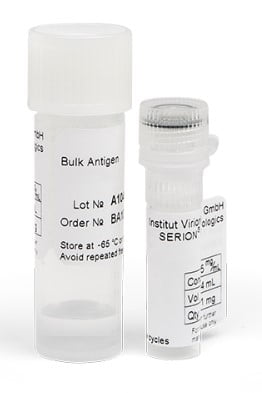
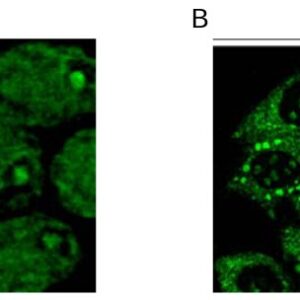

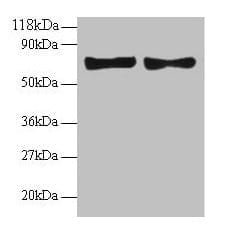
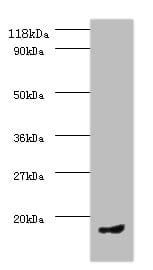

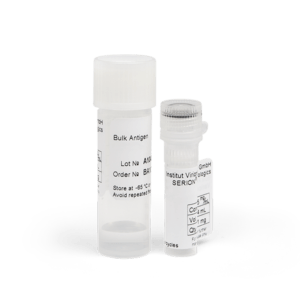

Reviews
There are no reviews yet.